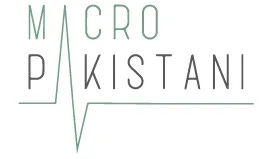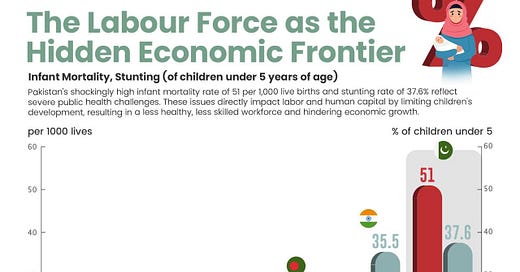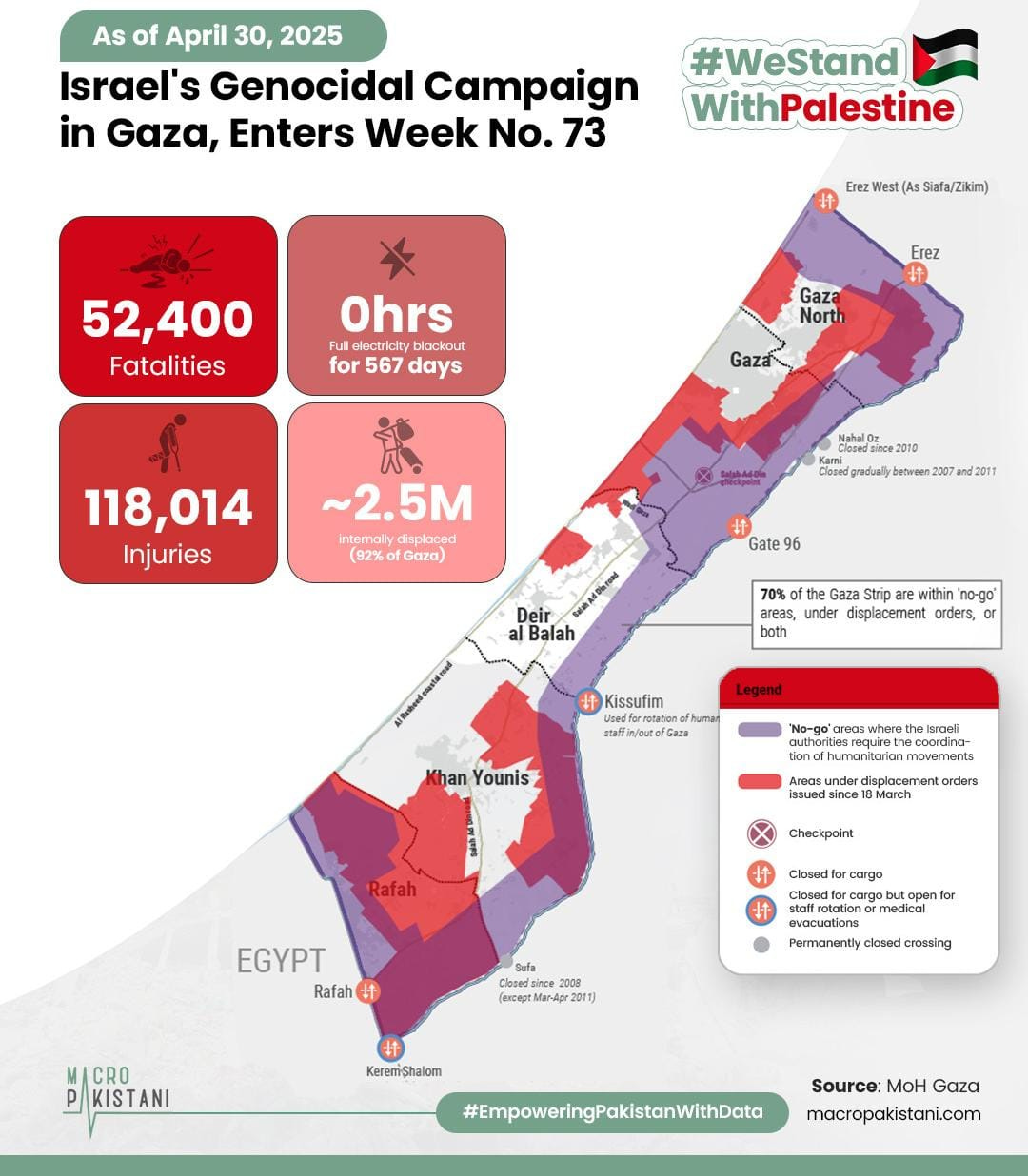The Labour Force as the Hidden Economic Frontier
Pakistan has the potential to boost GDP per capita growth by 32%, with a potential 144% increase by 2047.

Labour productivity, the efficiency with which an economy transforms labour into output, is crucial for sustained economic growth, although Pakistan’s labour force often takes the backseat during conversations about Pakistan’s economic future. Hence, for Pakistan, this foundation has remained fragile for decades. While East Asian countries like South Korea and Malaysia invested in human development to drive industrial and technological transformation, Pakistan has faced recurring economic imbalances and a weak shift from low-productivity sectors. Agriculture, which absorbs the largest share of the workforce, contributes the least to output, while industrial productivity is hindered by outdated infrastructure, limited R&D, and policy distortions. The services sector has improved, particularly through digitalisation, but overall gains remain modest.
A key reason behind this stagnation is Pakistan’s chronic neglect of human capital, especially in health and education. Millions of children remain out of school, and many lack access to basic healthcare. Like other South Asian nations, Pakistan faces malnutrition, poor sanitation, high infant mortality, and low life expectancy. These health burdens directly affect worker productivity in a labour-intensive economy. Research shows that investing in health not only improves well-being but also boosts economic growth by enhancing the workforce's physical and cognitive capacity. Secondly, Pakistan's structural transformation (ST) has been sluggish, marked by a slow shift of labour from agriculture to more productive sectors like manufacturing and services. Despite a decline in agriculture's share of employment since the 1990s, it still employs the largest portion of the workforce and remains highly unproductive compared to regional peers.
For example, between 1990-2018, labour in Pakistan predominantly moved to low-productivity sectors such as construction, real estate, and wholesale trade, in contrast to East Asian economies like Vietnam and China, where labour migrated towards high-productivity manufacturing and export-driven sectors. Moreover, Pakistan's labour productivity growth is constrained by weak improvements within sectors and limited migration to more productive industries. This is evident in the country's low share of manufacturing in GDP, low rankings on the Economic Complexity Index, and negligible high-tech exports. Compared to countries like Bangladesh and Cambodia, which have experienced more significant reductions in agricultural employment, Pakistan's sectoral reallocation remains modest, with agriculture still constituting a substantial portion of its workforce.
Furthermore, Pakistan’s low integration into global value chains (GVCS) and weak foreign direct investment (FDI) inflows compound its struggle to compete globally, exacerbating its slow pace of economic transformation.
Pakistan's youthful population, with 63% under 30 by 2025, offers a significant opportunity for economic growth. By investing in education, health, and skills development, and improving labour force participation, especially for women, Pakistan could boost GDP per capita growth by 32%, with a potential 144% increase by 2047. A strong labour force is essential for global competitiveness and resilience to challenges like climate change, making it key to Pakistan's future economic success.
GRAPHIC
Since March 2, Israel’s complete blockade on the entry of humanitarian aid and supplies has had deadly consequences for civilians in Gaza and has crippled the ability of medical and aid workers to respond meaningfully. It is critical to lift the blockade and allow large-scale humanitarian access to this devastated area, to prevent further suffering and loss of life.
The informal economy in Pakistan is estimated to be 64% larger than the formal economy, particularly in nonagricultural sectors, leaving millions without social protection or income security. As a result, productivity suffers and workers remain trapped in low-skill, low-wage jobs. Pakistan is also rated a 5 in the ITUC Global Rights Index 2024, highlighting severe violations of worker rights.
Data Visualization & Marketing Partner: Brand Nib
Visit: https://macropakistani.com/advertise/
Grateful for the ever-growing list of collaborators!
About Us: Macro Pakistani is a data-driven research platform that aims to provide a basic understanding of Pakistan’s economy. If you have an interest in contemporary news but are currently overburdened with sensationalism and specialized vocabulary, we are the platform for you.
How are we doing? Please send us any questions, comments or suggestions by replying to this email.





